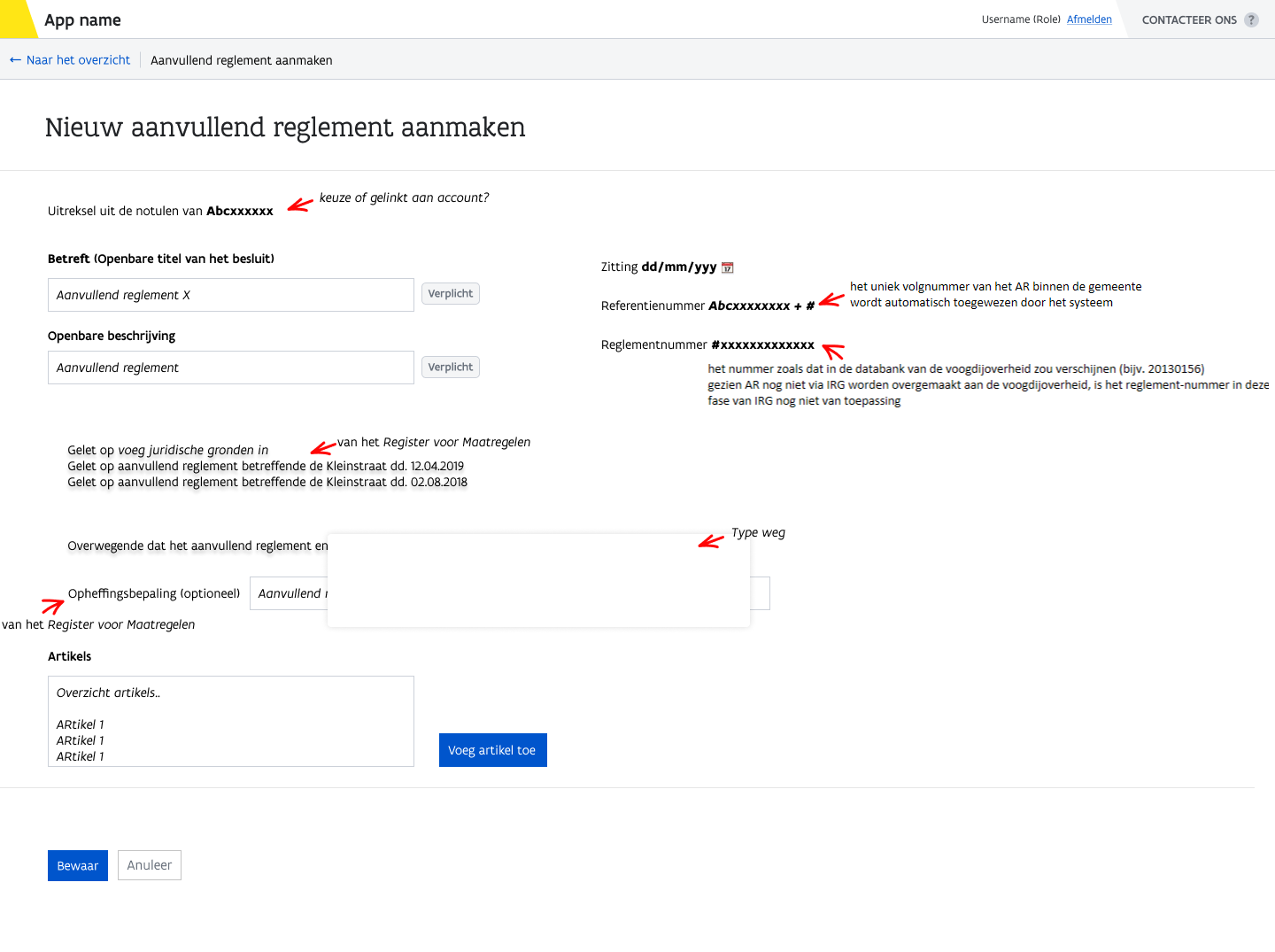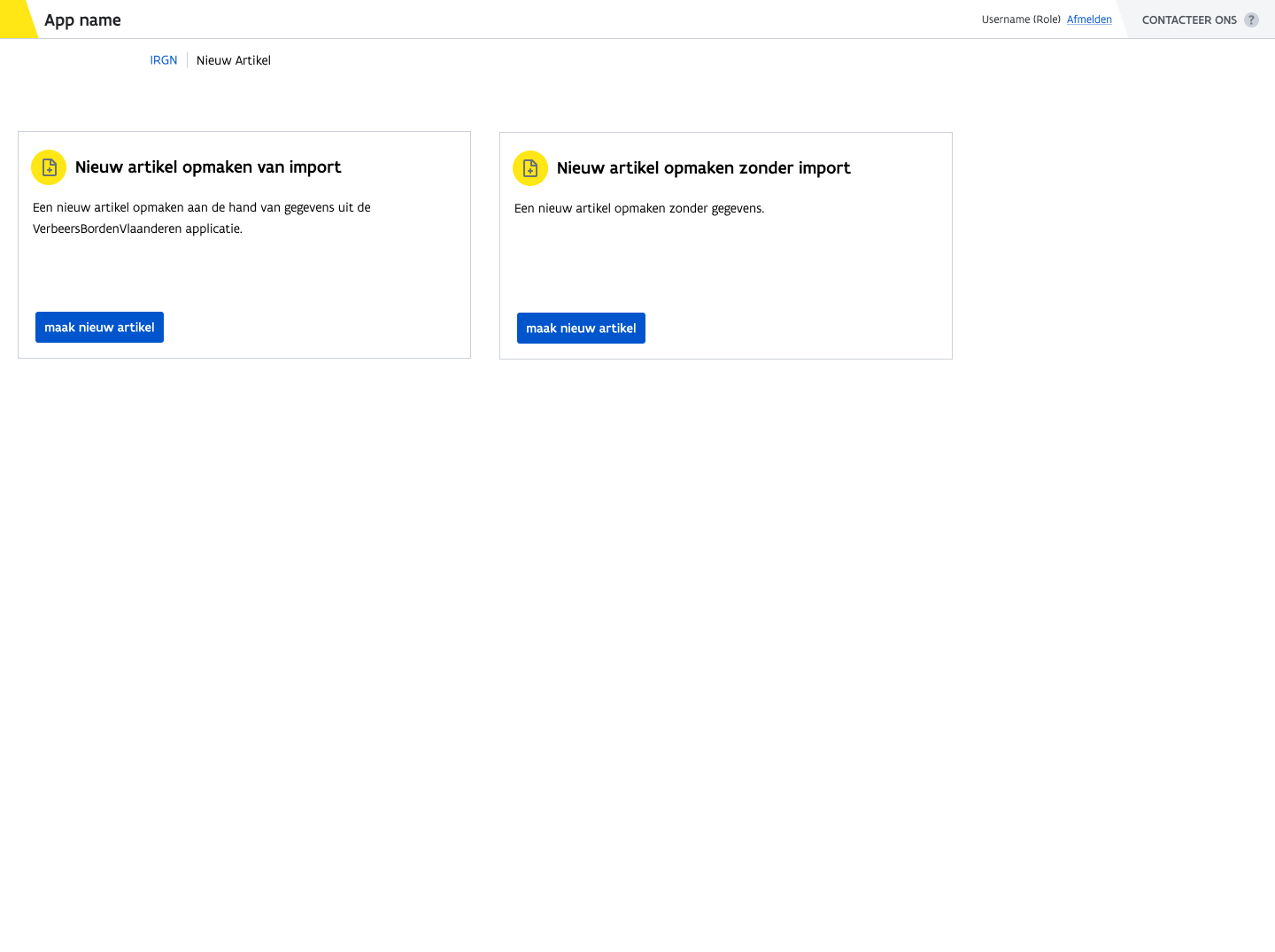Concept
The import from VKB.VL
In VKB.VL a selection of signs regarding a new traffic law is made and exported to IRGN:
The selection of traffic signs spans the area the resulting law will cover and includes:
All the signs that are NOT altered
All the signs that are added
The import contains the URIs for each new or altered sign and a map with a visual representation for the setup.
The imported package from VKB.VL contains : (URI's based on Applicatieprofiel:Verkeersborden )
URI TrafficSignConcept (URI Verkeersbordconcept) with properties : image, meaning, classification, status, traffic-sign-code, points to
URI Setup (URI Opstelling) with properties: image, geometry, belongs to, includes 'draagconstructieverkeersborden', comprises traffic-sign, operational status, position relative to the road
URI Sign (URI Verkeersbord) with properties: view, image, size, admin, width, height, supplier, operational status, comment, setupheight, realises
A visual representation of the road regulation on a machine readable map.
*Each property only relates to the specific URI it stems from.
Create/Format/Edit a new AR
GOAL: Using the information from the imported URIs the application will have to generate legally correct suggestions for the user to choose from, when composing the new AR.
ARs are only created for signalisation that either commands or prohibits the road-user. This signalisation is clearly summarized in: 'de omzendbrief MOB/2009/01 van 3 april 2009'
An AR consists of 3 parts: The 'overwegend gedeelte', the actual decree and finally the closing articles and necessary signatures.
PART I
The 'overwegend gedeelte' is always first. The goal is to clearly state the reason WHY the new law is being created, often with a good title. The first part also contains the legal conditions (=randvoorwaarden) and the considerations (=overwegingen) that have to be met.
Legal conditions (randvoorwaarden)
"Gelet op..."
The municipality law (gemeentewetgeving)
new municipality law (KB 24/06/1988)
municipality decree (15/07/2005)
The traffic law (verkeesregelgeving)
wegverkeerswet (KB 16/03/1968)
wegcode (KB 1/12/1975)
code van de wegbeheerder (MB 11/10/1976)
Specific regulation conserning ARs
decree of 16/05/2008
uitvoeringsbesluit 23/01/2009
omzendbrief 03/04/2009
Is there data that can be sourced from the Registry here?
Juridische gronden & Opheffingsbepaling = Pre-existing ARs
Considerations (overwegingen)
The considerations try to take note, as complete as possibe, of the different motives for the new regulation. These can range from traffic-security-considerations to actual elements from the 'mobiliteitsplan'. Here the the municipalty has to prove they proceeded deliberaltely in their decisions.
PART II
The actual decree is the second part. It contains an article-by-acticle summary of the measures to-be, and each article is is limited to a description of :
The new measure: WHAT is happening? which new rule applies here?
The location: WHERE does this new law apply?
The signalisation: HOW is the new rule applied / indicated?
PART III
The third part contains the closing articles and the necessary signatures.
User experience / flows
The transition from IRG to IRGN should to some degree be 'natural'. In the meaning that the main user flows in IRG are finetuned for an enhanced experience with a low learning curve.
Last updated



